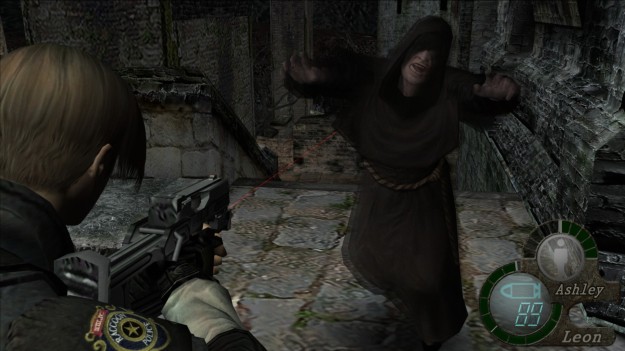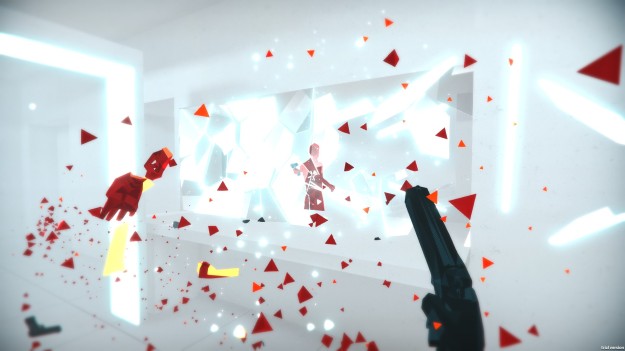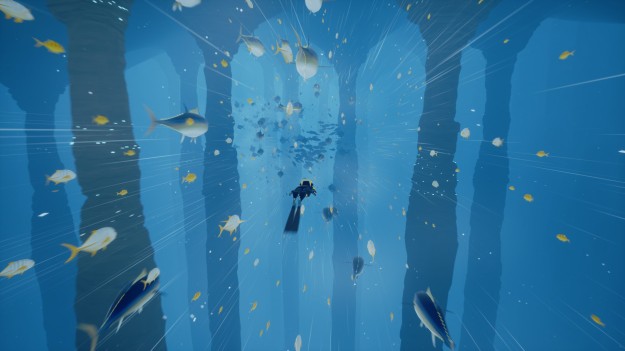It was after only five minutes of gameplay that I knew I should have heeded the warnings.
It was as I watched my car lying smoking at the bottom of a ravine that I realised the discussion surrounding Dirt Rally spoke the truth. Put bluntly; this game is hard. Almost ridiculously so. You’re not going to be casually flinging yourself around corners with the greatest of ease within your first hour, picking up one victory after another. You’re much more likely to underestimate what you are getting yourself into, as did I, only to see your hopes of easy glory be chewed up and spat right back out. This is serious business, and in response it’s going to take a serious effort to even hope to come out the other end unscathed.
In some ways, I can’t help but feel this is a downside to the game. At times it feels extremely vindictive; where a single mistake doesn’t just lose a few seconds, but holds the potential to cost you the whole tournament you’ve been desperately trying to win for the past few hours. It doesn’t matter how perfect you’ve been racing or how skilled you are – screw up for the briefest of moments, and only plentiful use of the restart button will save you from unrelenting despair. It’s a strange experience, and one that can at times both be incredibly disheartening and extremely frustrating.

Now don’t get me wrong – I get it. I know this is what Dirt Rally wants to be, and that there are no second chances in the real world of rallying. I therefore can’t begrudge it for what is clearly an active design choice. Yet it still remains something that I feel really has to play on your mind before deciding on your purchase. Put simply; if you’re not up for a great degree of brutality being flung your way, you seriously shouldn’t be here.
Yet such pain does not come without reward. Because, slowly but surely, you learn what it takes to succeed. You discover how truly essential it is to pay attention to your co-drivers instructions. You come to understand that crests and dips in the road are as important as its twists and turns. You learn when to go aggressive, when to shy away from speed, and how to save yourself from near disaster. Put it all together and – Bam! – You’re suddenly thinking like a rally driver. You’re absorbed in the moment, doing everything by nigh-on instinct, and at moments it’s possible to forget you’re actually playing a game at all. As an attempt to capture the experience of being a rally driver goes, Dirt Rally can certainly be called a success.
With the sense of this experience, of course, come the feelings that go with it. There’s an actual sense of dread to situations where you plunge through deep forests or skitter on the edge of cliffs. Equally, there’s a real thrill to truly nailing a corner correctly, hitting its line perfectly and zooming away with a burst of speed. It’s the middle ground between the fear and the fury which I love, though – the knowledge that everything is within a moment of falling apart, yet you’re managing to maintain control by the very edge of your fingertips. If you manage to win an event (which is honestly no mean feat), the sense of pride that you’ll take in doing so is very real. It’s not a hollow, easy victory. It’s something you’re worked hard towards and achieved, and the fact the game can invoke so much happiness from such a thing is to be commended.

So before the menacing demeanour, there’s certainly some satisfying gameplay to be found. It’s therefore just a very nice bonus that such gameplay is also presented in an extremely good-looking way. At points things really do visually shine; dust clouds plume up behind you, and your car amasses dirt and grime as time rolls on, making you truly look well weathered. Crowds are people in general are disappointingly plain, true, but overall this is a pretty good looking game at times. The audio, if anything, is even better. Not only does every car’s engine road and growl roar in an incredibly pleasing manner, but there are loads of little touches to be heard as well. Bits of rock ping and rattle off your car, brakes squeal and squeak when put under pressure, and the roar of the crowd passes away in moments as you surge forward. It really adds to the overall immersion of the experience, in a way that a generic soundtrack blaring away every single race could never hope to do.
Overall, then, Dirt Rally may have a menacing appearance, but give it time and effort, and there’s something that really shines bright and true underneath. This certainly isn’t for everyone, and it pays to be acutely aware of that. But it equally doesn’t stop what’s there from being incredibly thrilling, mildly frightening, and just a whole heap of fun.

















